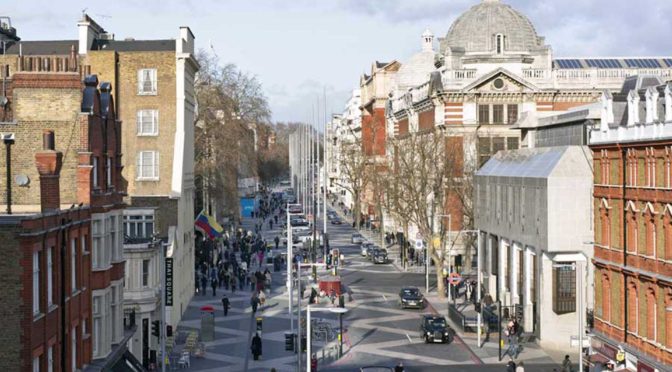Following the Crowd | Movement, Space Use, Risk Management examines movement, congregation and space use in crowd phenomenon based on two studies in London during the late 1990s. The first was New Years Eve celebrations in central London and the second is the ‘Diana phenomenon’ of crowd gatherings in public displays of mourning in Kensington Gardens. The course argues two points. First, clearly, there are crowd characteristics particular to specific events, i.e. number of people, time factors, and crowd management measures. 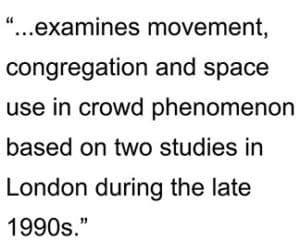 Second, many crowd characteristics often represent only a dramatic, temporary intensification of everyday circumstances in urban conditions, which has implications for recent pedestrian-oriented design concepts such as shared space (2.0 hour course).
Second, many crowd characteristics often represent only a dramatic, temporary intensification of everyday circumstances in urban conditions, which has implications for recent pedestrian-oriented design concepts such as shared space (2.0 hour course).
NOTE: This course makes selective use of space syntax. Even if you are not familiar with space syntax, the subject matter should not be considered a deterrent.
Key concepts: crowds, movement, occupation, police, risk management, urban design.
Instructor: Dr. Mark David Major, AICP, CNU-A
Check here to purchase this course (FREE registration required), which includes an two hour video presentation and PDFs of the course supplementary materials and slide handout.



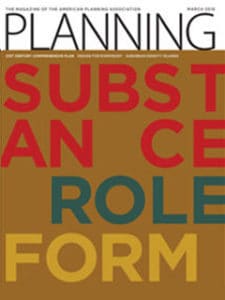 Planning Naked | March 2016
Planning Naked | March 2016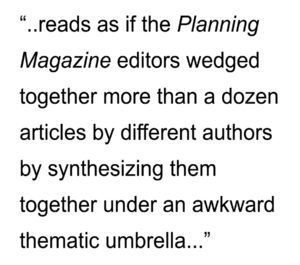 That’s not to say there aren’t good, interesting items in here (there are) but it’s a chore to sort through the mess and the constant “take (insert ‘community name/plan’ here)” asides are irritating in the extreme. It’s like someone composed a checklist, which can be re-constructed based on these paragraph ‘take this example’ asides. Let me try to help the readers: pp. 14-19 is ‘buzzword’ fluff that reads like a committee of marketing agencies wrote it (ignore it unless you find yourself in need of action verbs); pp. 20-24 (to the first 2 paragraphs) is outstanding because it demonstrates the re-emergence of design (e.g. form-based codes, etc.) as the real driver of new approaches to comprehensive plans and, in typical APA fashion, the awkward structure is designed to subvert the real story in order to re-assert (or, perhaps, soften the blow to) traditional planning approaches in the post-war period; the rest of the content (pp. 24-31) is mostly more planning fluff and buzzwords except for isolated excerpts here and there about PlanLafayette.
That’s not to say there aren’t good, interesting items in here (there are) but it’s a chore to sort through the mess and the constant “take (insert ‘community name/plan’ here)” asides are irritating in the extreme. It’s like someone composed a checklist, which can be re-constructed based on these paragraph ‘take this example’ asides. Let me try to help the readers: pp. 14-19 is ‘buzzword’ fluff that reads like a committee of marketing agencies wrote it (ignore it unless you find yourself in need of action verbs); pp. 20-24 (to the first 2 paragraphs) is outstanding because it demonstrates the re-emergence of design (e.g. form-based codes, etc.) as the real driver of new approaches to comprehensive plans and, in typical APA fashion, the awkward structure is designed to subvert the real story in order to re-assert (or, perhaps, soften the blow to) traditional planning approaches in the post-war period; the rest of the content (pp. 24-31) is mostly more planning fluff and buzzwords except for isolated excerpts here and there about PlanLafayette.
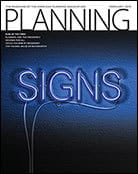 Planning Naked | February 2016
Planning Naked | February 2016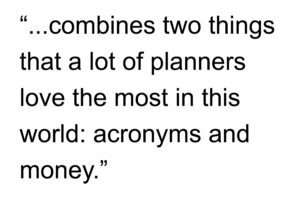 “A Transportation Bill, At Last” by Jon Davis (pp. 8-9) is combines two things that a lot of planners love the most in this world: acronyms and money. Here’s the long and short of the Fixing America’s Surface Transportation Act (FAST Act… oh, a cool acronym… that must mean it’s important because it’s fast!): for every $1 spent on the automobile (e.g. roads), the US Government is spending 0.24¢ on buses and 0.04¢ on passenger rail. It must be great to be a Washington lobbyist for the ‘automobile cartels’. To quote a song from the 1977 Disney film, Pete’s Dragon, it’s “money, money, money by the pound!” “He that is of the opinion money will do everything may well be suspected of doing everything for money.” – Benjamin Franklin
“A Transportation Bill, At Last” by Jon Davis (pp. 8-9) is combines two things that a lot of planners love the most in this world: acronyms and money. Here’s the long and short of the Fixing America’s Surface Transportation Act (FAST Act… oh, a cool acronym… that must mean it’s important because it’s fast!): for every $1 spent on the automobile (e.g. roads), the US Government is spending 0.24¢ on buses and 0.04¢ on passenger rail. It must be great to be a Washington lobbyist for the ‘automobile cartels’. To quote a song from the 1977 Disney film, Pete’s Dragon, it’s “money, money, money by the pound!” “He that is of the opinion money will do everything may well be suspected of doing everything for money.” – Benjamin Franklin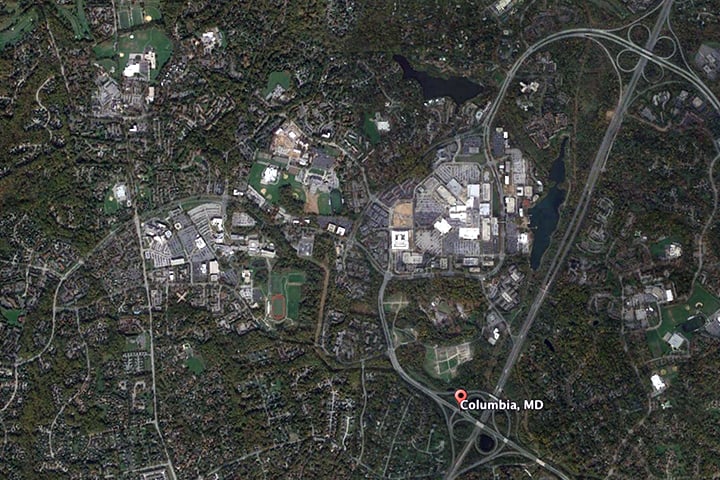
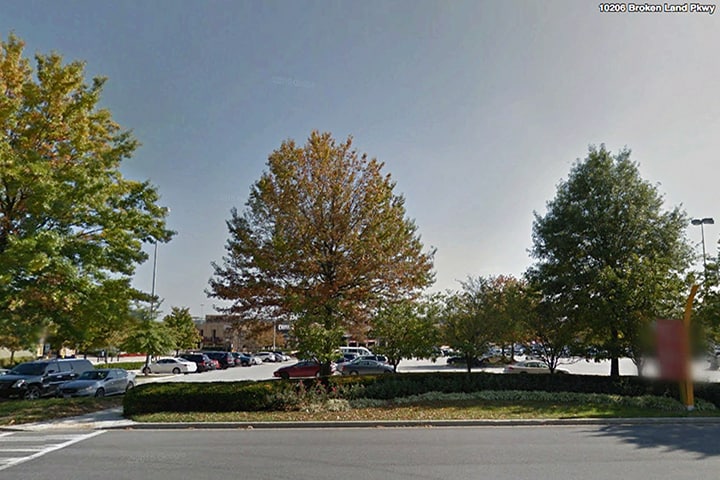
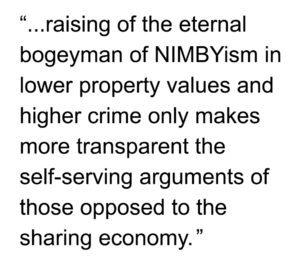 The raising of the eternal bogeyman of NIMBYism in lower property values and higher crime only makes more transparent the self-serving arguments of those opposed to the sharing economy. Let’s fight for the normal, not the abnormal created in 1926 by the U.S Supreme Court.
The raising of the eternal bogeyman of NIMBYism in lower property values and higher crime only makes more transparent the self-serving arguments of those opposed to the sharing economy. Let’s fight for the normal, not the abnormal created in 1926 by the U.S Supreme Court.
